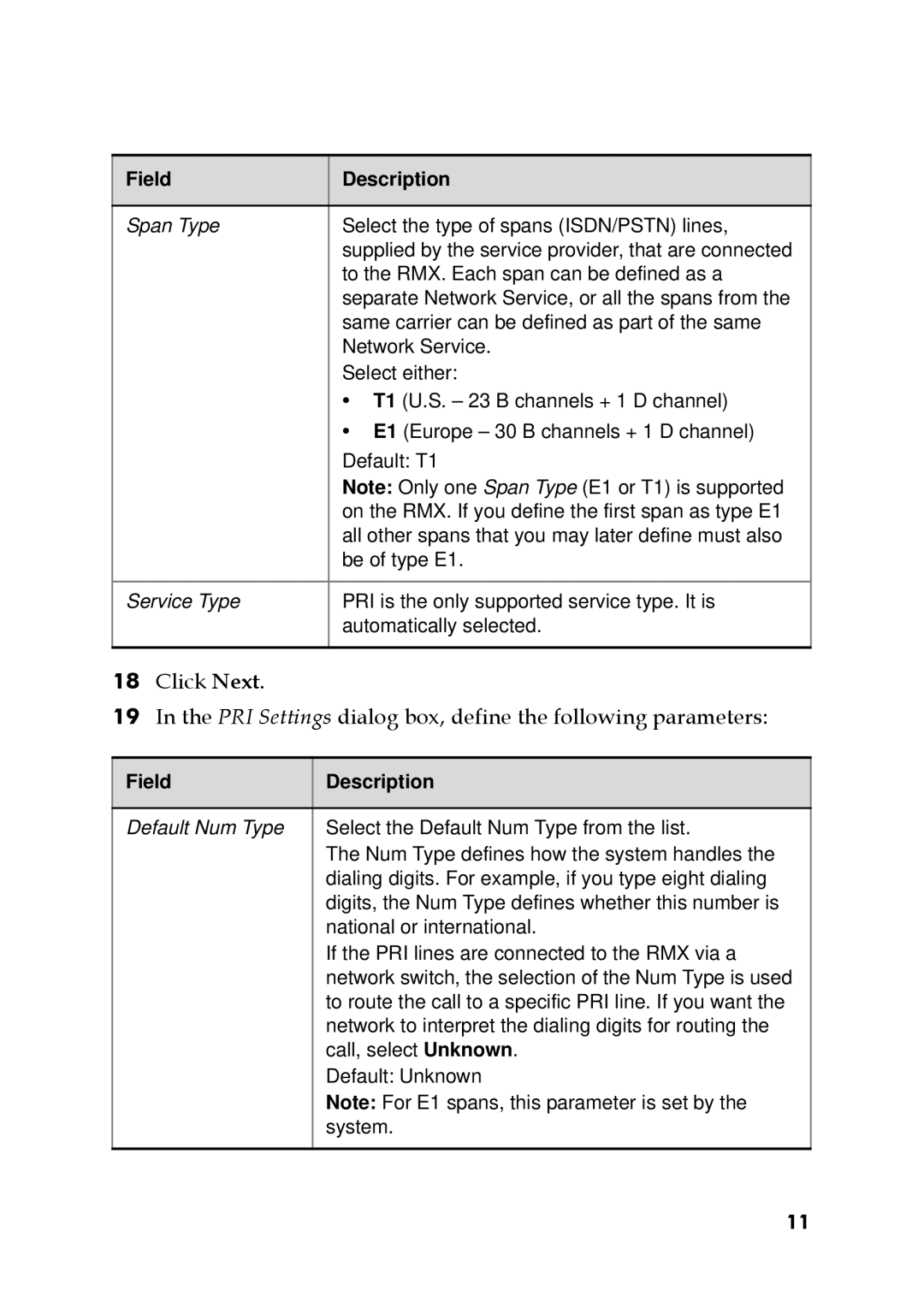Field | Description |
|
|
Span Type | Select the type of spans (ISDN/PSTN) lines, |
| supplied by the service provider, that are connected |
| to the RMX. Each span can be defined as a |
| separate Network Service, or all the spans from the |
| same carrier can be defined as part of the same |
| Network Service. |
| Select either: |
| • T1 (U.S. – 23 B channels + 1 D channel) |
| • E1 (Europe – 30 B channels + 1 D channel) |
| Default: T1 |
| Note: Only one Span Type (E1 or T1) is supported |
| on the RMX. If you define the first span as type E1 |
| all other spans that you may later define must also |
| be of type E1. |
|
|
Service Type | PRI is the only supported service type. It is |
| automatically selected. |
|
|
18Click Next.
19In the PRI Settings dialog box, define the following parameters:
Field | Description |
|
|
Default Num Type | Select the Default Num Type from the list. |
| The Num Type defines how the system handles the |
| dialing digits. For example, if you type eight dialing |
| digits, the Num Type defines whether this number is |
| national or international. |
| If the PRI lines are connected to the RMX via a |
| network switch, the selection of the Num Type is used |
| to route the call to a specific PRI line. If you want the |
| network to interpret the dialing digits for routing the |
| call, select Unknown. |
| Default: Unknown |
| Note: For E1 spans, this parameter is set by the |
| system. |
|
|
11
